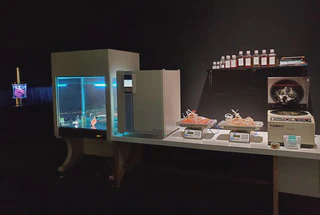Synthetic biology: engineering order in organisms across scales and species
 Image credit: Amy Karle
Image credit: Amy KarleAbstract
Synthetic biology has enormous potential to solve problems in health, agriculture, and energy. Bill Jia and Arin Wongprommoon explore engineering approaches to controlling biological processes.
Type
Publication
BioTechniques
Lay summary
Synthetic biology is a field of science that applies engineering principles to living organisms. This short opinion piece shows three examples of its use.
- A team in Cambridge (UK) assembled a piece of DNA that can make bacteria change colour based on the concentration of a chemical that the bacterial cells use to talk to each other. This system could be changed to make complicated patterns. People use bacteria like this to make drugs. So, creating patterns in space is useful because it separates steps in drug production that interfere with each other.
- A team at the University of Illinois at Urbana-Champaign assembled pieces of DNA that, when put into bacteria, make them mimic ecological interactions. These interactions included cooperation between species, competition between species, and one species eating another. Studying the interactions between microbes is useful because these interactions are present in the human gut and in the soil. But, engineering these interactions in order to understand them is difficult.
- MRSA is a drug-resistant bacterium that can cause serious infections in hospitals. The human immune system kills MRSA in a process that involves many immune cells and chemicals that the cells make to talk to each other. A team at the University of Basel (Switzerland) engineered synthetic human cells that short-cut some steps of the immune response and put the entire process in one cell. The synthetic cell could detect and prevent MRSA infection very well.
My role
Bill and I equally contributed to this article. I mainly wrote about the MRSA study.
BioTechniques had a connection with the Cambridge University Synthetic Biology Society and regularly invited leaders of the society to write articles about synthetic biology. In the society, students design projects in synthetic biology and organise teaching workshops in both the laboratory and computation sides of the discipline.